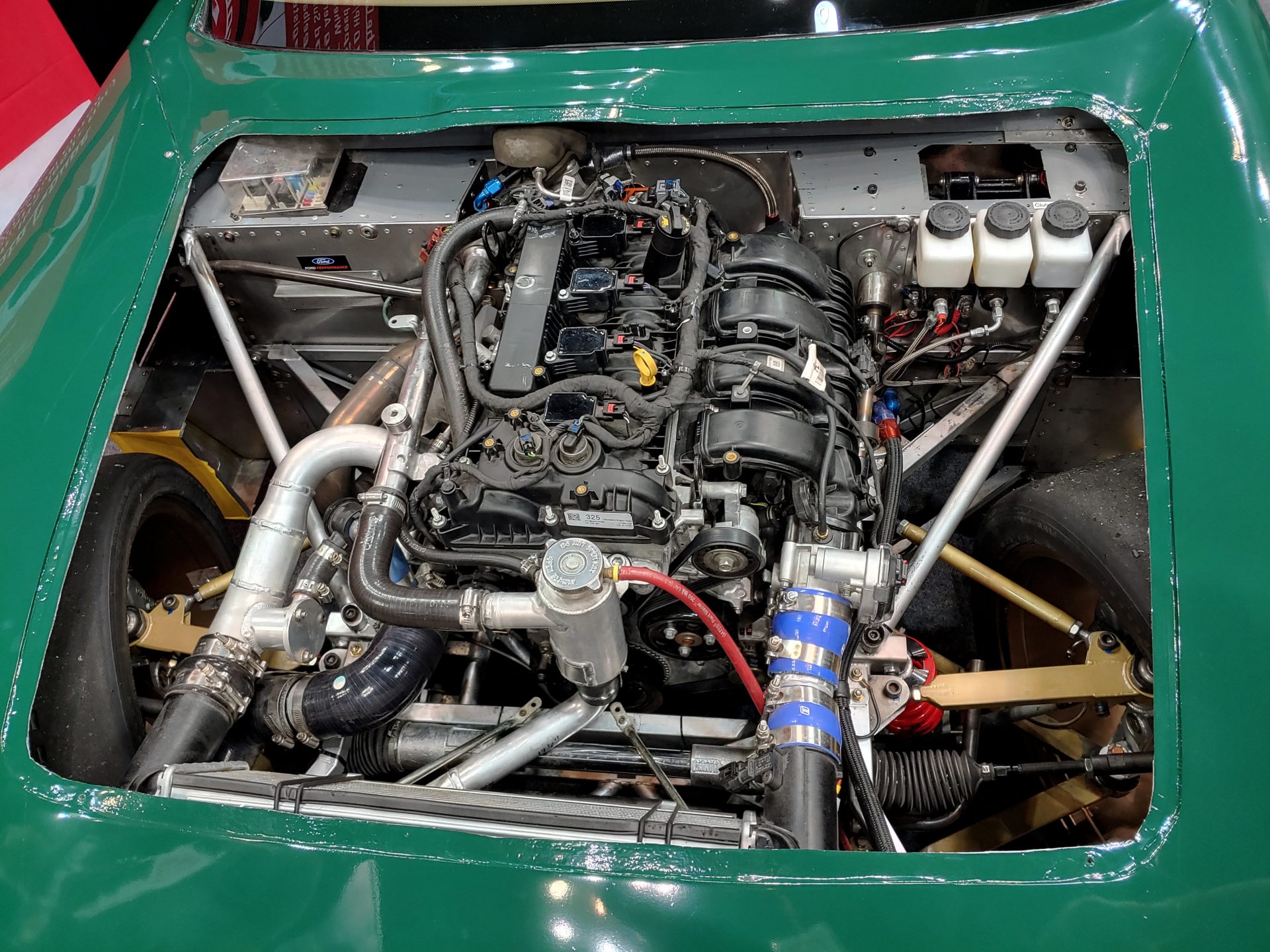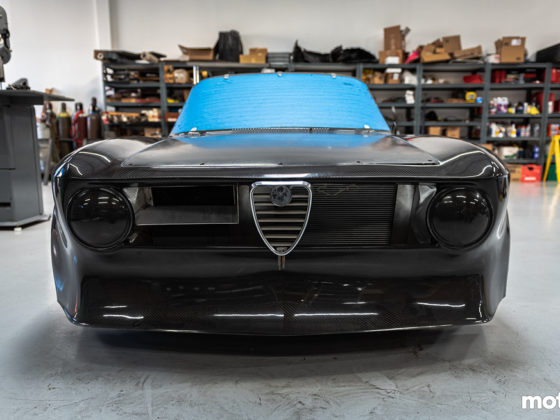
The interesting thing about this car is that it has global in the name. You can take this car anywhere on the planet and compete in Mazda’s MX-5 cup series. Since most of us are likely North America-bound, there is still a wide array of options to use it outside Mazda’s namesake series, including NASA and SCCA competition.
However, this isn’t just some shock-and-spring package on a factory ND MX-5. The Cup car includes a SADEV 6-speed sequential gearbox, a full competition cage, 2-way adjustable damping coilovers, and more. It’s quite a potent package, but it does come with an $89,718 price tag as optioned.

This 1800-lb tube-frame car features a 2.3L EcoBoost crate engine and was designed to use as many off-the-shelf parts as possible to make maintenance easy. For example, it features a T56 gearbox and a Ford 8.8 rear-end. The drivetrain even uses stock Ford engine management, so it comes with a limited warranty!
With 310hp in this base configuration, the car promises to provide GT4 lap times for a mere $65,000 base price. That makes it (to start) cheaper than the MX-5 Cup car, as you aren’t buying a completely stock MX-5 and then paying FLIS to modify it. However, the price tag for the Cardinal does not include a full race cage. Granted, there’s also no Cardinal Coupe global series, but still.
Fields can also configure the car to go faster (yay) or slower (why?!). For example, with a Mazda MZR or Duratec engine, the car would be capable of running in SCCA T2, whereas with a Coyote, LS, or another motor, it could go fast enough to run in T1 or other classes.
Fields is based in Columbus, Ohio, and offers two other hand-built cars. Their Scioto Coupe, starting at $110,000 without powertrain, looks somewhat Porsche 917-ish. Their Series 300 Roadster, starting at $19,999 without a powertrain, appears a lot like a Spec Racer Ford in silhouette.

Open-wheeled FIA racing has a somewhat predictable (pun intended) formula. You start in the slow cars and then get faster. F3, long ago, was the bottom rung, but in recent years F4 has appeared with several US championships, and, of course, many global ones.
The F4 is an extremely impressive car, with a full carbon monocoque and carbon bodywork, the new safety halo (trickled down from F1 and Indycar), various engine configurations, a SADEV paddle-shifted gearbox, and lots of aero. I didn’t talk to anyone at Mygale but did a little research online. F4 is an interesting situation in that you don’t buy cars. Instead, you lease them for the season, which ends up costing something like $150,000. PER SEASON.
Speed costs money. How fast can you afford to go?




4 comments
Thanks for the summary! I have only been to PRI once sadly, and I think that was back in 2008 when it was still in Orlando. Interesting about the Precision, the end housings look very EFR-like. Well, only so many ways to do the same feature set. I know the owner of Dyme PSI, he’s very active out here in SoCal helping with builds. The rattle snake kit would be awesome for any shop that builds cars. It takes all the guess work out, reduces wasted material, and all the stuff they send is tested for quality to ensure there are no leaks (maybe the most important part). I was wonder how the Miata Cup cars were keeping from grenading the manual transmission… I see they just replaced it completely, ha! I bet Hunter will sell a ton of those tire change machines. The EV conversions are coming… the tricky part right now for the DIY’er is the battery pack and thermal management. AEM was smart and jumped on it early, getting their ECU and BMS stuff going. Now the OEMs are doing crate motor/inverter setups. The last piece really are battery modules/packs.
Khiem, to answer your “question” on the Miata Cup car transmissions: they obviously weren’t doing anything to keep them from grenading- but they were covering them under warranty and contingency. I had a friend go through 2 transmissions- completely covered under warranty. Mazda told him they would not cover the 3d one if it blew as well.
But, isn’t that one of the best benefits of selecting the Mazda as a track toy? Things are covered under warranty just like on the street car, and for things that aren’t- you get a discount on the parts- 2yrs ago replacement crash parts for cup car owners was cost plus 10%! What other auto manufacturer is supporting their grassroots motorsport customers like that?
Part of the reason for the change from the OEM transmission to the SADEV was that the OEM trans were not holding up to the rigors of racing. However, it was usually the front-pack racers who were flat-shifting and driving the cars to 99.99% of their capabilities that were destroying the trans. I don’t think it was 100% of the cars that were grenading transmissions all the time, but rather the most abusive drivers were guaranteed to kill one.
I don’t think your casual weekend warrior or track-day enthusiast is going to kill an OEM trans.
I definitely see the value in the Dyme system for volume. For one-sy two-sy kind of hose work, though, it may not be worth the entry price.
I was definitely at a few of those Orlando-era PRI events!
I believe this is basically the same transmission in the FR-S/86/BRS and if so its is pretty fragile.